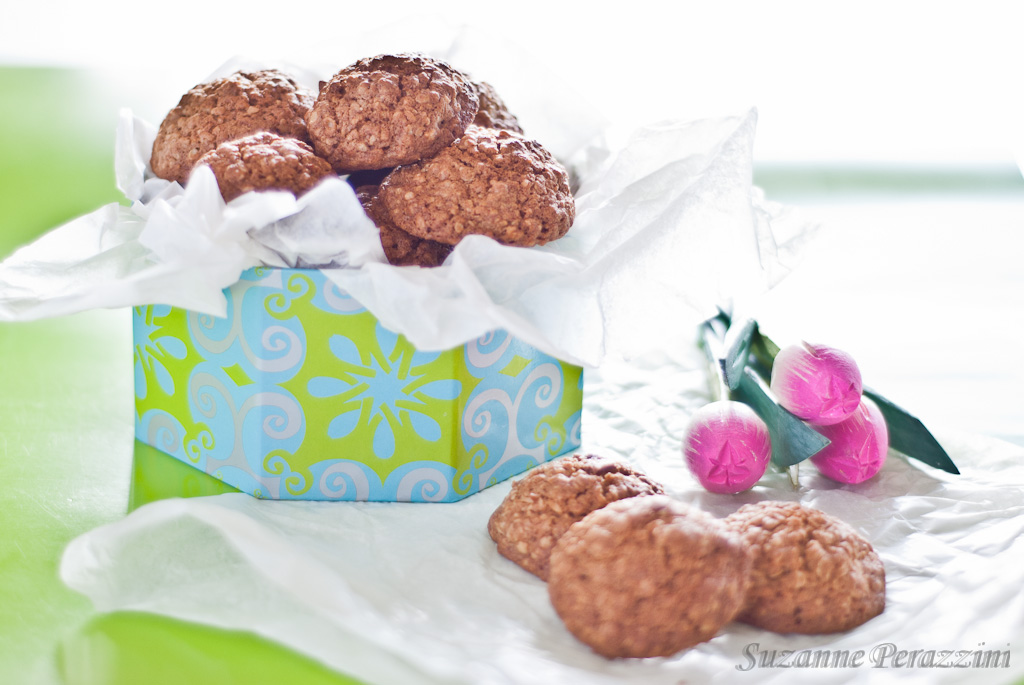

There’s a lovely blog, My Darling Lemon Thyme, which I have followed since well before I knew what my food intolerances were and now it is coming in useful because Emma’s recipes are gluten-free. At this point, I need to explain something. I know I call my recipes gluten-free and they are, but I am not gluten intolerant. Confused? Gluten is the protein part of grains like wheat but I am intolerant to the fructans (the sugar part) in wheat, rye and barley. Fructans are chains of fructose molecules with a glucose molecule at the end. However, it’s easier to say I am gluten-free because few understand the fructan story. Fructans and fructose are closely related and most people who are fructose intolerant are also intolerant to fructans. But I am not intolerant to gluten. Is that as clear as mud?
Anyway, back to My Darling Lemon Thyme, I found this recipe or almost this recipe there. By reducing the sugar and removing the dried cranberries, I was able to make it also low in fructose. Emma’s recipe is here. You can buy the brown rice flour here.
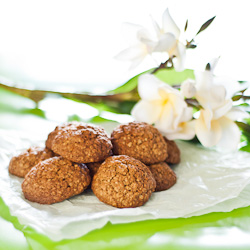
- 115g butter
- ½ cup cane sugar
- 1 tsp vanilla
- 1 egg
- ½ cup brown rice flour
- ¼ cup tapioca flour
- ½ tsp baking soda
- 1 tsp cinnamon powder
- pinch of salt
- 1 cup rolled oats
- ½ cup shredded coconut
- Cream butter, sugar and vanilla until fluffy.
- Add egg and beat to combine.
- Sieve together the dry ingredients except coconut.
- Add the coconut.
- Combine the dry and wet ingredients.
- Chill in the fridge for one hour.
- Preheat the oven to 170°C/335°F.
- Roll spoonfuls of the mixture into balls and place on a lined baking tray, 5 cm apart.
- Bake 12 minutes.
- Remove from the oven and cool on the trays for 15 minutes, then place on a wire rack until completely cold.
- Eat within three days.
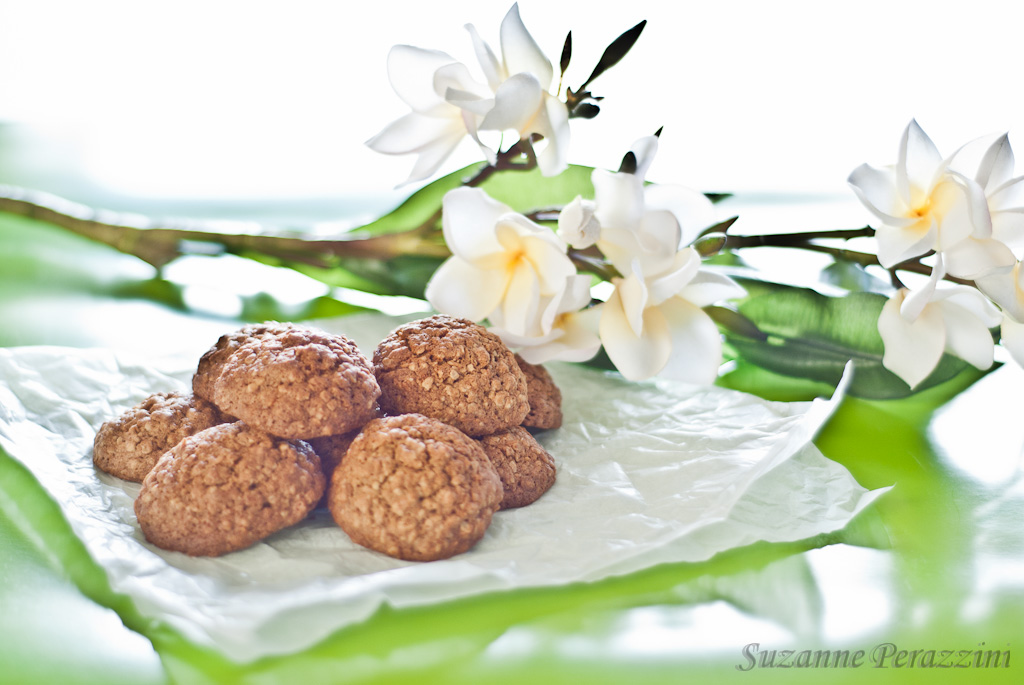
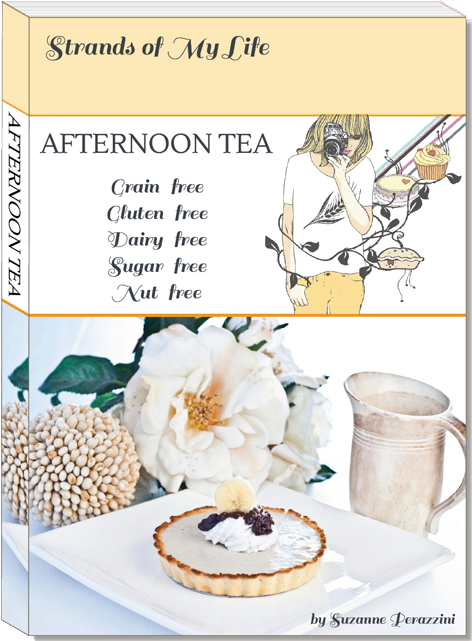


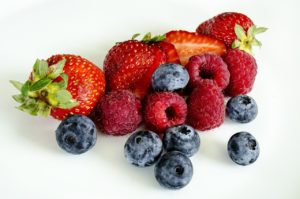


Thank you for introducing me to this lovely blog .
You’re welcome. Emma is originally from New Zealand but now lives in Australia.
I keep hearing about My Darling Lemon Thyme. I must hop across and check it out. If only we could have milk and cookies every afternoon followed by a nap! xx
It’s a great blog if you are gluten-free and Emma is in the process of bringing out a cookbook so her recipes can be trusted.
I’m all for milk and cookies everyday! And thanks for introducing me to My Darling Lemon Thyme – a new blog to me. Fun cookie – coconut is one of my favorite favors (although it’ll never replace lemon), so I’m always happy to see new recipes that use it. Thanks for this.
I also would place lemon above coconut but then if I can combine them, it is even better.
Gosh, I love coconut cookies. Does the brown rice flour give the cookies a little nutty flavor ?
Not too much but it’s hard to tell because of the oats and coconut. They’re easy to make and all my family enjoyed them.
Hi Suzanne
As a nutritionist and cookery teacher I ran “Winning ways without Wheat and Gluten” courses in South Africa for many years.
Just to reply to your info today. Strictly gluten free is easy to work out and remember if you know it excludes BROW nl barley, rye , oats and wheat… in all forms. Amongst my four gluten free family members one needs to exlucde just wheat as well as yeast while two are highly affected by barley (in all forms such as drinks or dried soup mix) and also oats while two of them can tolerate rye in smaller doses. None of them are Coeliacs but one does suffer from leaky gut syndrome which has caused a lotof serious discomfort.
Below the introduction to a basic gluten free course which may be helpful.
WINNING WAYS WITHOUT WHEAT AND GLUTEN
Reasons to avoid wheat and / or gluten vary from individual to individual and may range from slight intolerance to extreme sensitivity for even small traces of gluten. It is strongly recommended that you do not attempt self-diagnosis or self-treatment for any ongoing discomfort or serious or long-term conditions without consulting a medical professional such as a dietician or qualified practitioner. Initially you might feel daunted by the thought of eliminating wheat and gluten but don’t despair, it is easier than you think and the benefits to your well-being will soon outweigh the problems. At home it is quite easy to change the way you purchase as well as cooking and eating habits – but socially, when eating out or with friends, it will be more complicated for there are many commonly served food items that you will have to avoid (such as toasted sandwiches in a coffee shop!) Informing your hostess in advance to avoid embarrassment or disappointment and selecting carefully from any restaurant menu to avoid the allergens becomes easier as you progress.
· You need to understand the difference between wheat-free and gluten-free
· Wheat-free excludes from the diet any form of wheat whether in baking or cooking.
· Gluten-free also excludes barley, rye, oats and wheat or “BROW”. Some who are intolerant of wheat, (not those with Coeliac disease) may tolerate barley, rye and oats.
· Select wisely from the wide variety of available wheat- and / or gluten-free crackers made with rice, maize or rye flour. Although practical and good to eat with sweet and savoury toppings, it can become boring to use as the only bread substitute.
· Most difficult of all baking to get 100% right is gluten-free bread! Wheat-free bread does not have the same texture or flavour as a typical yeast risen white or whole wheat bread. Rye breads are great but not suitable for strictly gluten-free diets.
· The aim is to produce a bread which will be an acceptable substitute with a pleasant taste and texture to enjoy with butter and sweet or savoury toppings such as jam or cheese or make toast for breakfast or good plain or toasted sandwiches.
· Wheat- or gluten-free bread can be stored in the freezer and served lightly toasted.
· To “bind” the dough and improve texture, certain additives such as Xantan gum (from health shops) or instant mashed potato powder may be added – see specific recipes.
· Make your own gluten free flour combinations – see recipes belwo – or if available and to simplify everyday baking, ready to use gluten free flours such as self-raising, self binding rice flour or gluten free cake or bread flour simplifies baking but is more costly. Mixing your own and experimenting may lead to great discoveries!
· Gluten-free baking (especially bread!) is tricky initially but with a good recipe and a little practise and patience several very good acceptable breads can be made.
· In cases of severe sensitivity, use gluten free baking powder and make sure that all equipment is perfectly clean before using to prevent even the slightest contamination with gluten.
. – And if you are a coeliac or hightly intolerant, remember… it is not only the symproms that you experience that are doing harm to your gut but also those that you are not even aware of.
Carolie, thank you so much for the information on gluten.
You did make it clear, and I wasn’t aware of fructan intolerance before. It must be so difficult to work out what is safe to eat and what isn’t. These cookies look like a great choice!
Lisa, I have a great book which spells it out for me so if I make a mistake, it is my own fault. i am thrilled I can still bake and eat it without effects as long as I choose my ingredients carefully.
I love cookies, especially cookies with oats! These look quite tasty.
They are tasty and they are rather healthy as well – not too much sugar.
I love your cookie quote! 🙂 These look great, although I haven’t tried baking with tapioca flour before. Great site! 🙂
Tapioca flour is an interesting flour and I love to use it for making bread and for thickening custards etc.
These sound perfect! Is cane sugar the same as rapadura/panela? THANKS 🙂
I don’t really know what that is but cane sugar can easily be found in any supermarket in the baking section with the other sugars. You could use ordinary table sugar too but cane sugar is a little better for a low FODMAP diet.
Hi!
I’m new to the FODMAP lifestyle and must admit it’s so encouraging to see so many yummy recipes like this floating around!
I’m just curious of one thing – why must they be eaten within 3 days? Is there something perishable in the ingredients?
🙂
Welcome, Laura. It’s good to see you here. I hope the low FODMAP diet has great results for you as it has had for me. The reason for eating many of these recipes within a few days is that they lose their freshness which could be the soft moistness of muffins or the crispiness of biscuits. It won’t hurt you to eat them later but they won’t be as good. I now freeze most of what I make and pop them in the microwave for 20 seconds before eating them (especially muffins. That way the freshness is preserved.